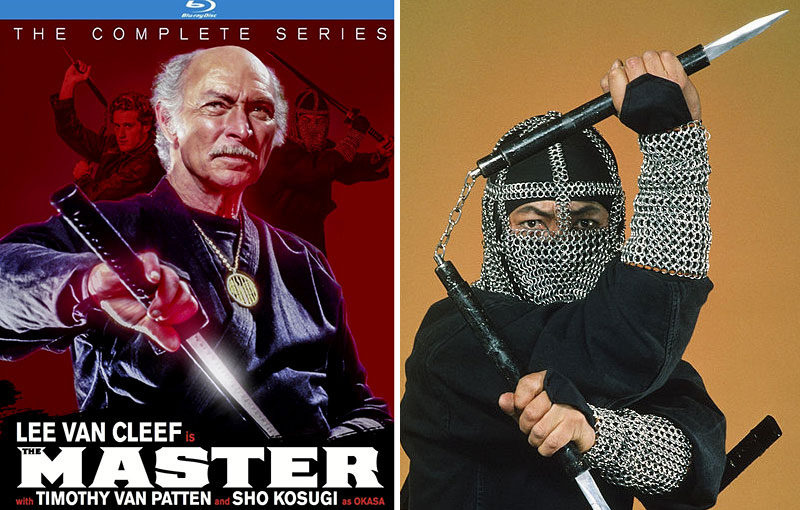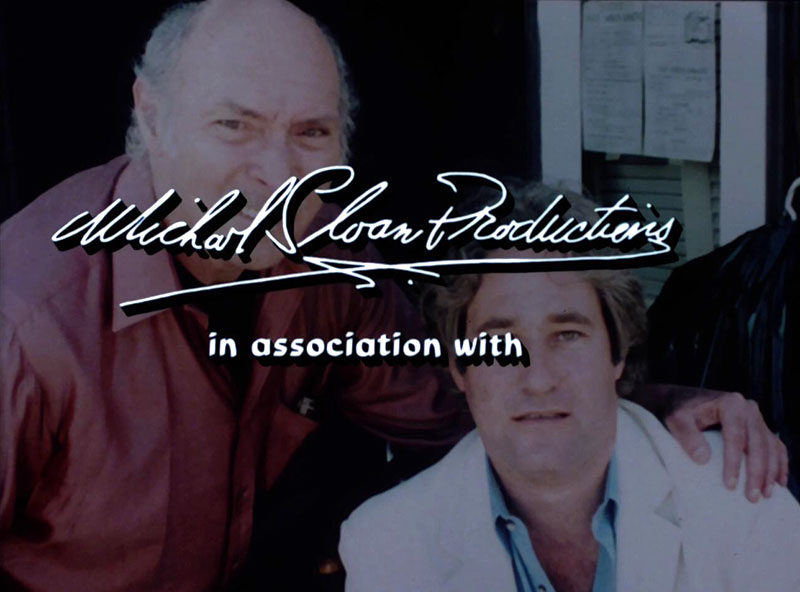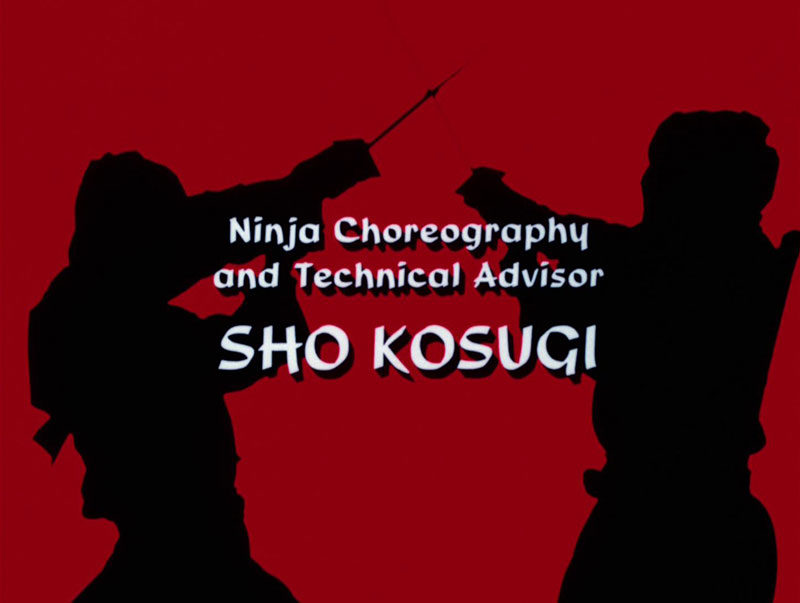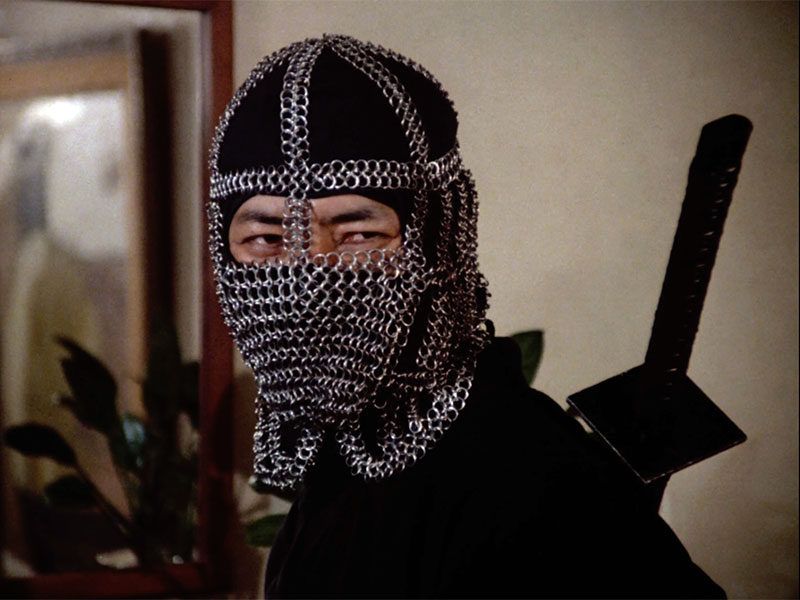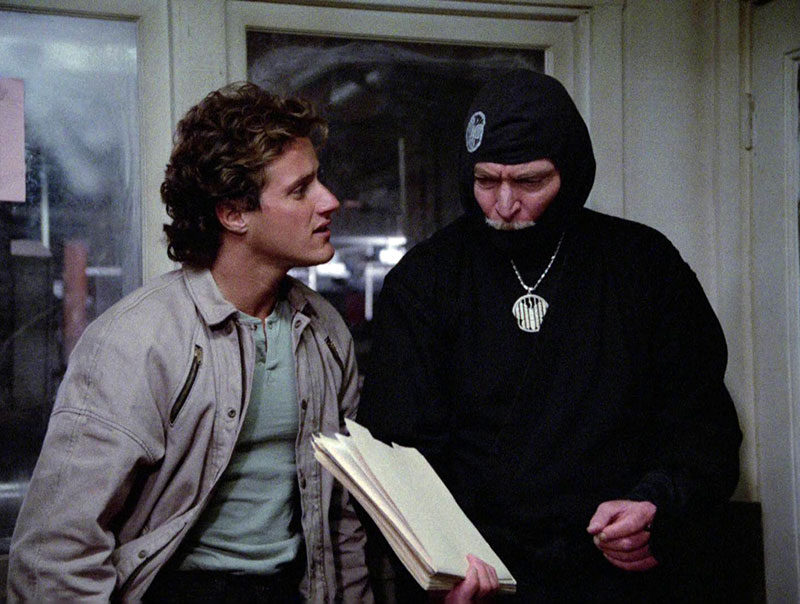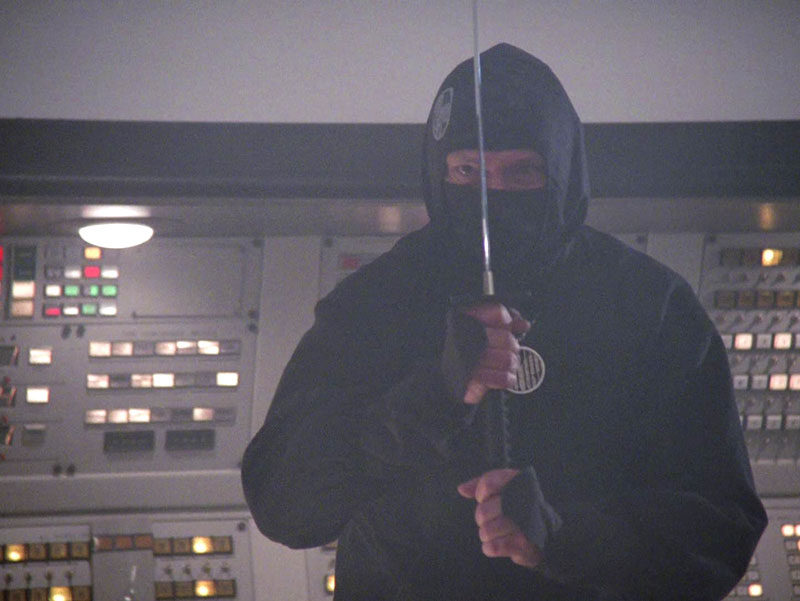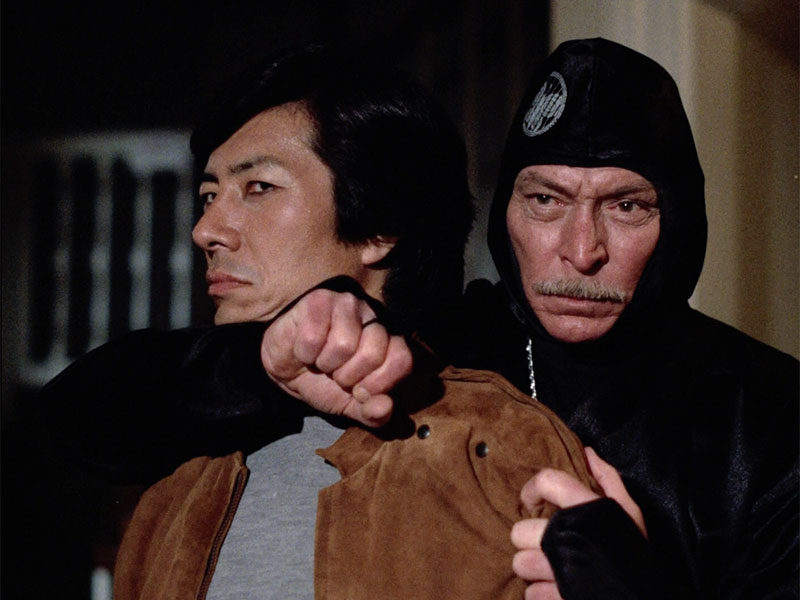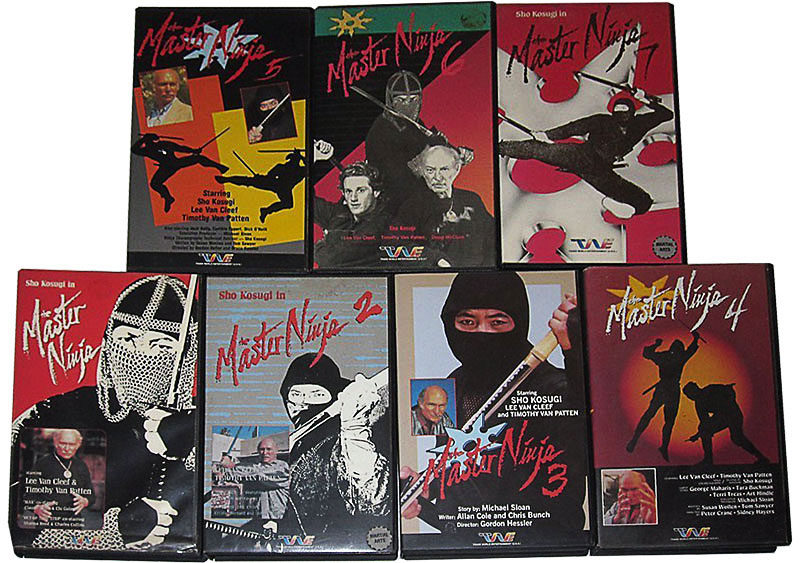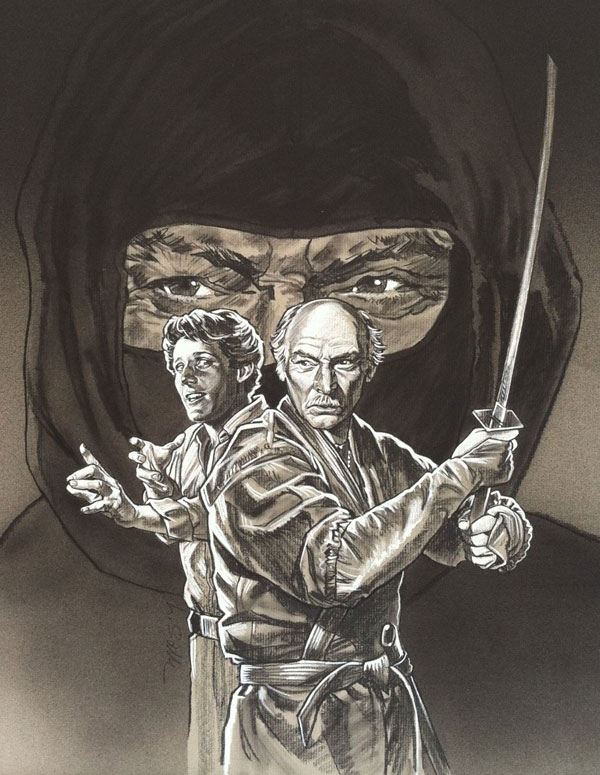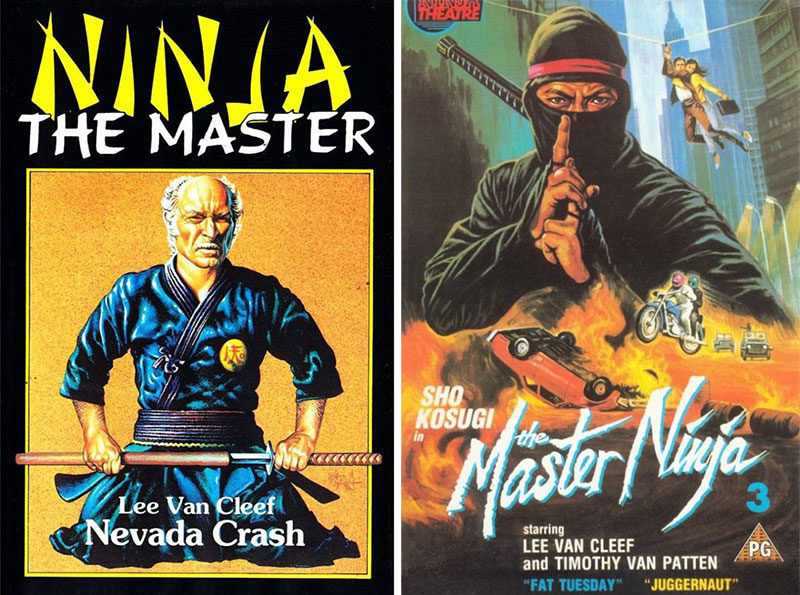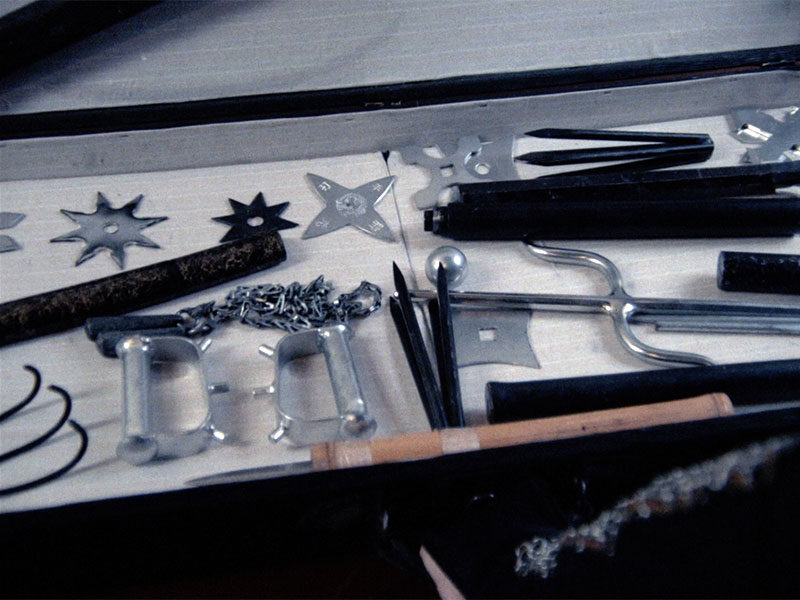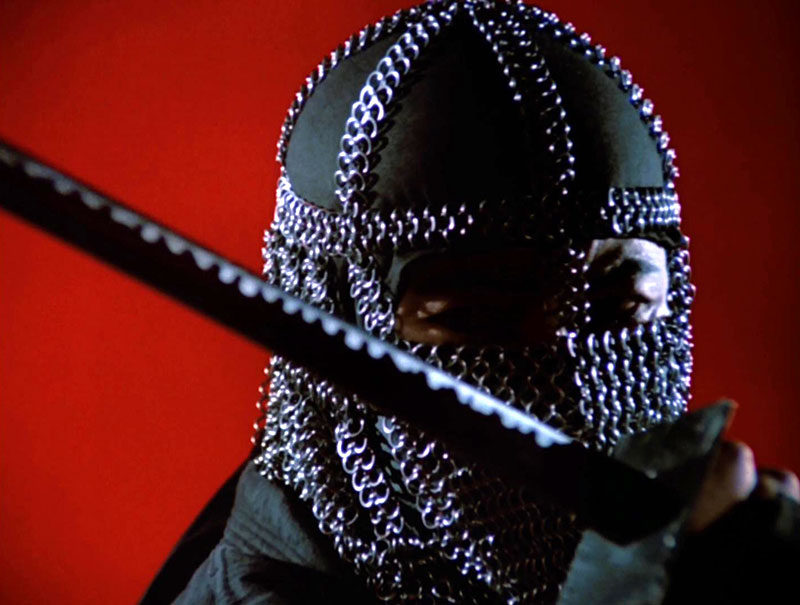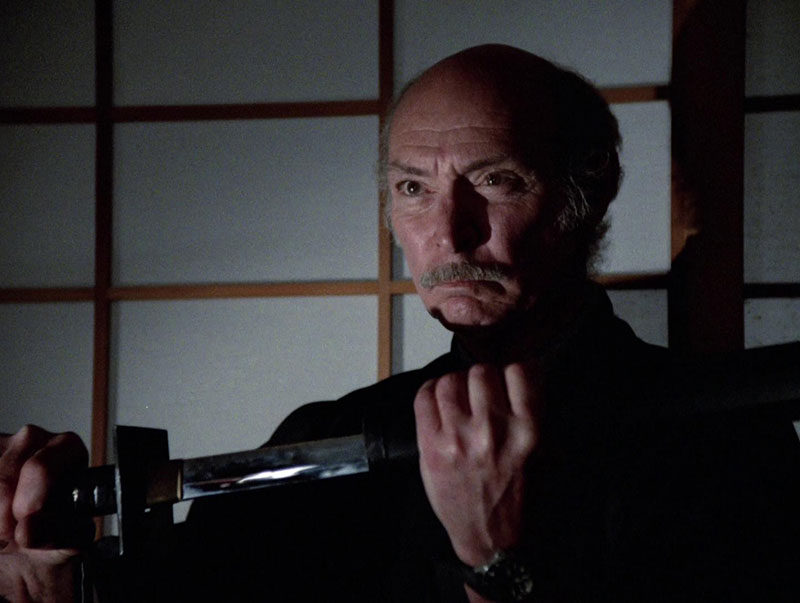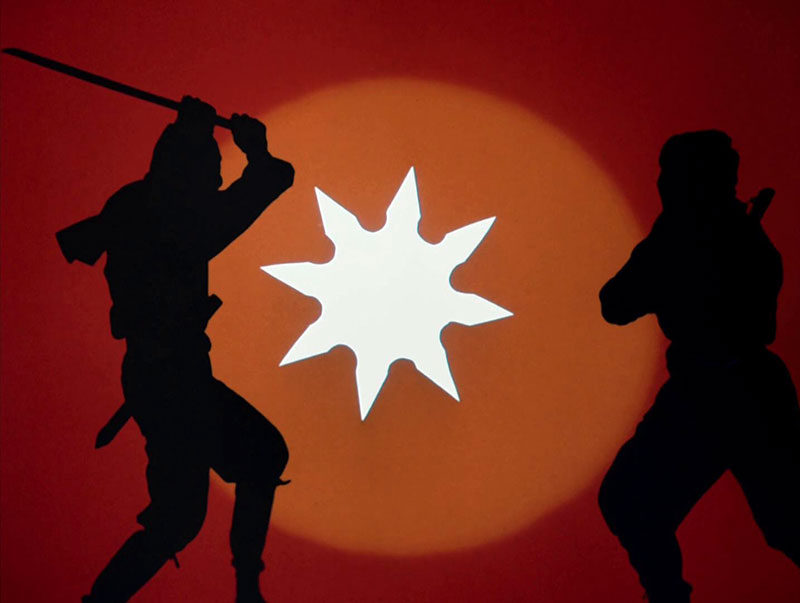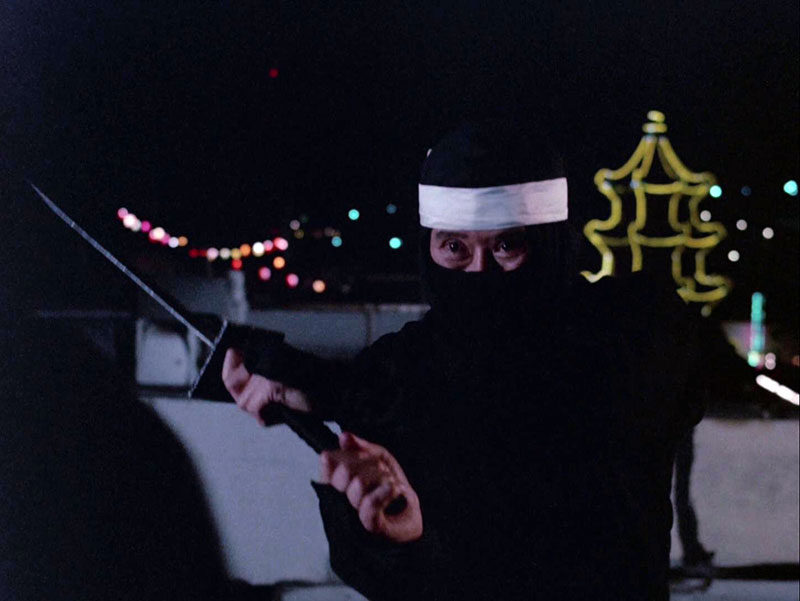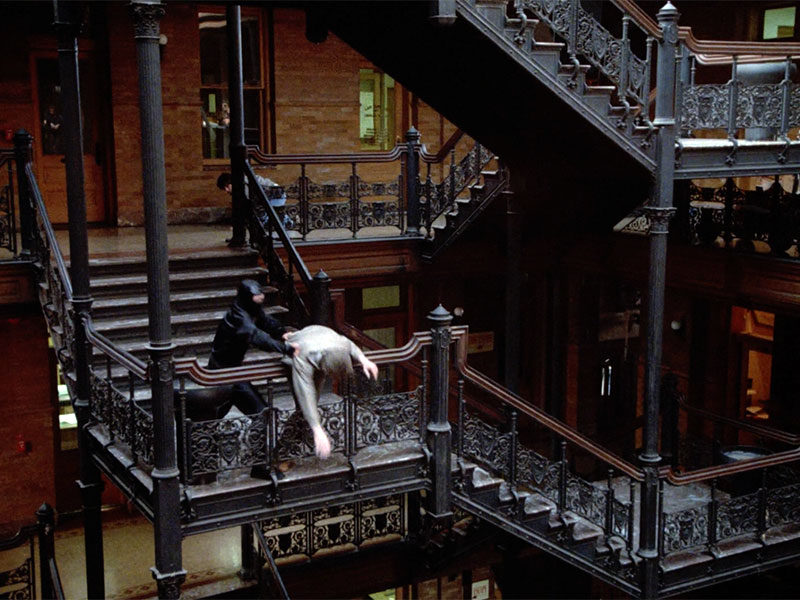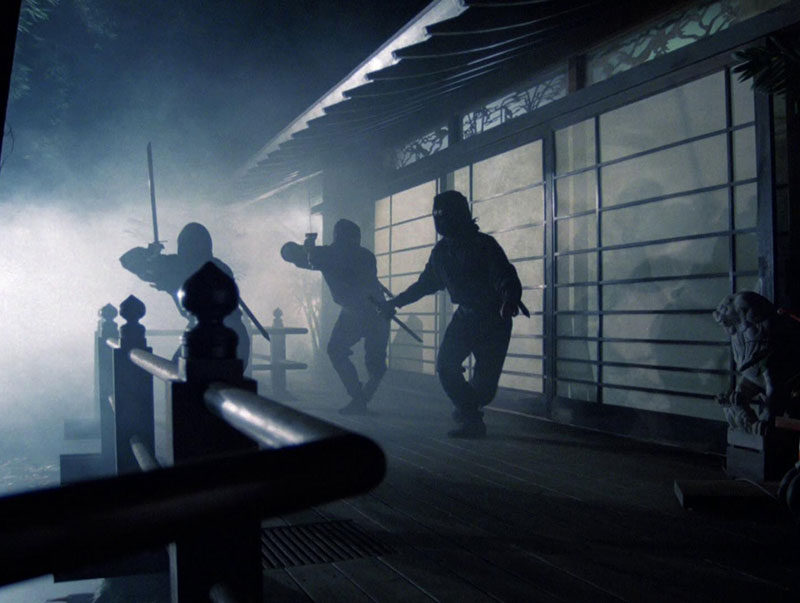Back in 1984, at least for this teenage ninja-maniac, four words began a turning point for the ninja craze:
“Hi, I’m Max Keller.”
Timothy Van Patten‘s intro to each episode of The Master has since become iconic for me. His role, the “ugly American” being introduced to the ways of the shinobi, while slathering the screen with sarcasm and slapstick, had my eyes rolling even at 15 when I was starved for anything ninja. Just a few years in to the ninja boom, it was already becoming apparent we weren’t going to get that big A-list Hollywood movie (read why here). Maybe network TV would be a more viable high-profile home. Maybe not.
Enter producer/writer Michael Sloan, a prolific TV talent (Battlestar Galactica, BJ and the Bear) who may first have been exposed to ninja when writing for Quincy, M.E. (the December 1977 episode “Touch of Death” was only the third appearance of a ninja on American television). The Master was his shot as creator and the timing seemed right. While ninja may have been relatively new to TV, and provided a real opportunity to do something unique, the new show’s structure, alas, ended up being Network Formulaic Adventure TV 101 — two misfit leads, would-be hearth-throb kid and older established star from a previous era (spaghetti western legend Lee Van Cleef), obligatory comedy relief and animal sidekick, signature vehicle, “Adventure Town” structure: different town every week with a different predicament for them to interfere with and solve (evil landlord, evil sheriff, evil industrialist, evil rival aerobics instructor, evil hamster rustler etc.), different veteran character actor villain (Clu Gulagher, Doug McClure, William Smith etc.) and different hot damsel to save (Crystal Bernard, a young Demi Moore and Revenge of the Ninja‘s Ashley Ferare included) — lather, rinse, repeat.
The Master could have been set up as a ninja equivalent of Kung-Fu, but instead was a clone of any given episode of Knight Rider or The A-Team re-skinned, with some ninja elements squirted in with a turkey baster. And the juice of that turkey baster was Sho Kosugi.
Kosugi came in to The Master much the same way as his Cannon films — part star, part choreographer, part costumer, part prop master, part stunt double — an almost producer/auteur-level contributor. As the vengeful Okasa — Japanese purist sworn to kill the West’s only ninja master John Peter McAllister after leaving the shadow life to find a daughter he never knew he had — Kosugi’s movie-quality fight scenes were modularly inserted into he plot-of-the-week, never affecting the storyline at hand but certainly being the high point of the show. Even sans the blood and over-the-top kill shots we loved from the movies, these ninja fight interludes always delivered. For us, he was literally the only reason to watch, and the season’s few Okasa-less episodes were instant letdowns.
Despite being firmly entrenched in the cult of all things ninja as a teen in the 80s, even I had a hard time defending The Master back in the day. The visual of a fully-costumed McAllister running into battle with an un-costumed Max Keller defied any logic, and just looked ridiculous. Max should have at least donned some sort of black utility clothing that escalated, as his training continued, into full ninja gear.
The fight and stunt doubling of Van Cleef was obvious to the point of outright humor, almost insulting to both the actor and audience. And it was so often unnecessary — his doubles (Kosugi included) posed and moved just like they themselves would have, never taking in to account they were supposed to be mirroring an old man. Scenes with gratuitous tumbling and multiple somersaults were written in when they never should have been even considered. Martial arts movies are so rife with old master characters, whose movements are minimal and efficient, belying their age and experience and selling the notion of their total dominance of the arts. Their physicality, or lack thereof, is written for their ages. Why this philosophy was never followed is baffling and remains the show’s achilles heel.
The on-screen cheese that resulted from these bad decisions only served to reinforce everything negative any outside critic or detractor thought of the ninja craze. The Master was seen as shlock, took an unfair critical beating, and was even derided within the hardcore front-line ninja freaks. It fared no better at the corporate level. Far from the ratings boon the network suits had hoped for, The Master‘s 13 episodes were often bumped around airing schedules or pre-empted for sports events, and in many parts of the country the entire run was never even broadcast. A second season was out of the question, and while there was still a ton of ninja-sploitation on the horizon, no big studio or TV network was going to back any sort of serious ninja project again.
If The Master wasn’t an outright turning point, it certainly illustrated the plateau of both production quality and Hollywood interest the boom had hit. The glass ceiling had been struck. “Hi, I’m Max Keller” may not have been THE moment the ninja craze jumped the shark, but it certainly was the moment it was fitted for water skis…
The Master‘s relative infamy continued a couple of years later when Transworld Entertainment repackaged the run for VHS rental. The six tapes, retitled The Master Ninja were emblazoned with Kosugi imagery and sometimes steered away from outright recognition of the show. A lot of people brought these home from the video store thinking they were either A.) a new ninja movie they had never heard of, or B.) new episodes of that now obscure ninja show they never got to see. They were neither.
Then something strange happened over the next decade as the show, or parts of it, somehow fell into Public Domain and ended up even more shamelessly repackaged for priced-to-sell budget tapes (and eventual DVD compilations).
This lead directly to The Master‘s biggest audience and an entirely unrelated off-branch of cult fandom apart from us shinobi-nerds, as four episodes of the show (minus original credit sequences) were aired as Mystery Science Theater 3000 episodes in 1992-93. The robot host’s ear-wormy “Master Ninja Theme Song” bit remains one of the general public’s most enduring memories of the show.
All these years later, we finally see a proper home release of The Master on DVD and Bluray from Kino Lorber. It’s a few-frills package — case design is Van Cleef-centric (Kosugi’s Okasa might have been a better choice) but what really counts is the show has never looked better, especially compared to some of the shoddy Public Domain releases still festering out there. The only extras are trailers from Kosugi and Van Cleef films, which is a real shame because there were extensive photo shoots done of the cast in costume prior to its debut (see several at Getty Images here).
The network ran some striking illustrated ads for the show, as well:
And a gallery of what was often superb international VHS packaging (see the Japanese releases here) would have been great too:
While these new releases of The Master and its competing network’s predecessor The Last Ninja may lack the deluxe treatments we’d love, the fact that the entire American output from the 1980s ninja craze has FINALLY been remastered (no pun intended) and preserved for our digital world is indeed excellent. I’m happy to own it in one nice complete, and fully legal, package.
So yes, I can finally enjoy The Master now. And I don’t just mean it’s finally available, I mean actually enjoy it.
The perspective of we fans now in our 40s versus us as butt-hurt dweebs in our teens makes that possible. The Kosugi moments from the show are worth it alone, and in hindsight now, we didn’t have enough of them back in the day, as the craze was cut short and Kosugi moved on to less ninja-centric projects. The chain-mail-clad Okasa stands as one of Kosugi’s most iconic get-ups, and there’s enough of his weapons-flourished karate-based fights and custom exotic arsenal throughout the series to keep things interesting. I also appreciate the wealth of character actors and classic California locations, the formulas and tropes now have nostalgic charm, and damnit you just don’t see conversion vans on the road anymore.
Pick up this set, it’ll be better than you remember…
OTHER RANDOM OBSERVATIONS:
• Robert Clouse, director of Enter the Dragon, The Big Brawl and more, helmed the show’s first episode “Max” — which means Clouse stands alone in history as directing Bruce Lee, Jackie Chan and Sho Kosugi (as well as Cynthia Rothrock, Samo Hung, Bolo Yeung and others).
• Michael Sloan would learn from the experience, and go on to create and write for the more prosperous The Equalizer and Kung Fu: The Legend Continues.
• I’d love to know when in the process of this show coming together Lee Van Cleef was settled on as the star. There’s no bigger fan of “The Bad” than me, but as structured, this project made him look just, well… bad. From a Hollywood perspective, hiring “The Man with the Gunsight Eyes” made sense, but there was a big difference between those gunsight eyes squinting from beneath a black hat, with that hawk nose and predator scowl like a grim reaper of the Italian West, and those same eyes leering out of an ill-fitting American mail-order-style ninja mask. Considering the way the doubling was done, would a younger actor have been a better choice? Maybe John Saxon? There’s just too much of a gap in the logic of the casting to the practices on-set for me to think Van Cleef was Plan A. Maybe a better idea would have been to put Van Patten in the suit, like he’s the ninja nerd wanting to don the full gear, and let Van Cleef be the slow-burning cool cat he was in The Octagon.
• The “Hostages” episode is a stand out for many as it cast David McCallum as the villain and George Lazenby as a British spy, an on-screen pairing of a Man from U.N.C.L.E. and a James Bond. However this wasn’t as history-making as it sounds, as the pair shared screen time in the TV movie The Return of the Man from U.N.C.L.E. from one year previous, also written by Michael Sloan.
• Bill Conti‘s music, particularly the theme, is an absolute legit classic of action TV craft. The opening credits are just superb, too. In this current wave of 80s fetish and retro appreciation, younger generations need to be cued in to this absolute gem of motion and graphic design from back in the day.
• The excellent Korean character actor Soon-Tek Oh plays a ninja from a rival clan in the “Out-of-Time-Step” episode, looking a bit awkward with what was clearly his first dabbling with ninja stuff. The next year he’d star opposite Chuck Norris in the memorable Missing in Action II: The Beginning. Do yourself a favor and check this movie out if you never have, or if it’s been a while. His final fight with Braddock is a lot better than here.
• Living the past 18 years in southern California I now recognize some of the classic locales used in The Master — the historic Bradbury Building (best known from the end of Blade Runner), Vasquez Rocks (where Kirk battled the Gorn on Star Trek) and in the intro credits we see the oft-filmed Japanese house and gardens owned by Shirley Temple, used also in the opening massacre of Revenge of the Ninja.
• For those to young too remember Eight is Enough, The White Shadow or Class of 1984, the name Timothy Van Patten will sound familiar. Learning director’s chops on Michael Sloan’s The Equalizer he’d go on to helm some superb TV episodes on series such as The Wire, The Sopranos, Boardwalk Empire, Game of Thrones and Black Mirror.
• One of my biggest fears in the first decade of the 2000s, when all sorts of old TV was getting remade as self-deprecating comedy drek, was a Master film with the likes of an Owen Wilson or Ben Stiller making complete fun of the ninja craze. My biggest dream today is a dead-serious reboot starring Kane Kosugi as Okasa, Scott Glenn as McAllister, and a redefined ‘Max’ being his half-Japanese daughter being trained at breakneck speed as they flee across the world escaping butterfly-emblemed assassins at every turn. Someone get on that, will ya!
• And one final observation… fuck hamsters.
MORE:
As usual, ShoKosugiTheNinja.com is the best repository of imagery.

